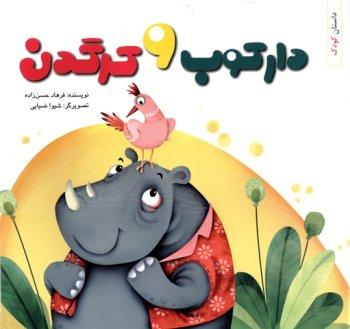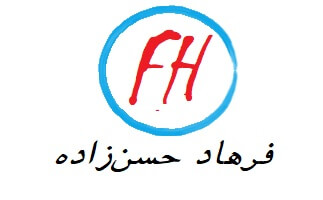There is a beautiful. green pond , that has water , grass , stone and also one other thing , which is not clear . None of us, even that little woodpecker doesn’t know what it is . The woodpecker is tired and wants to rest. It sits right on that thing which is at the edge of the pond.
The little Woodpecker is still tired when it hears a strange sound beneath him .
– Didn’t you find else where to sit rather than my horn?

داركوب و كرگدن
Wood pecker looked around and suddenly found the head of a huge creature underneath. It was an old rhinoceros with red eyes and hidden in the grass. Woodpecker told him: Who the hell are you?
– What am I doing under your feet? Ha, Ha, what a strange world! I’d better ask you Tiny, What are you doing on my horn?
Woodpecker said: Oh, you are tiny. Do you want to fight with me? Do you want me to make you blind with my beak? If you want to fight, O.K, tell me!
The old rhinoceros said: fight? What for?
Woodpecker shouted and said: “When I came here you were not here. Then you suddenly grew under my feet like a mushroom and frightened me. Who the hell you are? “
Rhinoceros did not like Woodpecker’s childish words and said: “Instead of talking , you’d better listen a bit : I am an old, strong rhinoceros , and you are sitting on my horn. A strong horn that has torn the stomach of hundreds of lion , wolves and foxes.“
Woodpecker looked at its big horn and surprisingly asked: “So , this is your horn under my feet?“
– Yes.
– So , Why it is in front of your eye ? Why isn’t on your head?
– I don’t know.
– Everybody has two horns. Cow, deer and wild goat have two horns , why do you have one?
Rhinoceros has never thought about that.
He carelessly said: I don I know , you ask strange questions , and thought himself : So why do I have one horn and that is one my nose ? If someday my children ask me , what should I tell them?
Woodpecker wanted to leave . It drank some water and moved its wings.
And apologized to rhinoceros for his rude words . He wanted to say goodbye when rhinoceros said: Wait!
you didn’t talk about yourself, where you have come from , and where you are going to.
– I have come from the forest , and will go back there . I had a lot of questions . I came to find the answers to my questions . But the more I move around , the more questions I find . What about you ? Do you have any questions?
– Me ? I am not the asking kind of person. Most of my life I have sat in a corner and watched the world , but it has been sometime that I have not been able to see well. I have a sore eye and I am not able to see well.
– So, that’s why your eyes are red!
Woodpecker came closer and sat on its horn again and said: – Oh! There is a straw in your eye.
Rhinoceros moaned and tears came down. Little woodpecker wanted to say: You are the one who has torn hundreds of lions, wolves and foxes apart , why have you become so helpless because of a tiny straw ? But he didn’t say anything and decided to help him . He said: If you don’t move . I will take it out with my beak.
– Can you really do it?
– Yes , Yes you shouldn’t move , just look at the sky.
Rhinoceros opened the eyes and stared at white clouds in the sky .The clouds that kindly rain . Woodpecker kissed his eyes and pulled out the small , sharp piece of wood:
– OK it is done.
Rhinoceros opened and closed its eyes time and again to be sure that the wood had been removed.
When he felt no pain he said: It does not hurt any more, Tiny ,it is allright.
Both of them became happy. The old rhinoceros wanted to thank him. He said: “ you are a good bird , first you sat on my horn , then you wanted to quarrel with me and make me blind with your beak , then you were kind and removed the thorn out of my eyes . So you can sit on my horn as long as you wish and you can even make your nest on my head.
Woodpecker laughed and said: thanks a lot. I have to go. Still I have to kind the answers for my questions Good bye.
– So , promise to come back again to see me.
– I will come.
Little Woodpecker flapped its wings and flew away.
The old Rhinoceros peacefully followed him.
And enjoyed looking. He loved watching and the woodpecker loved asking.
From then on Rhinoceros started to like asking. He wanted to ask someone:” If my horn was on my head , how would that piece of straw be removed from my eye?”
Story by: Farhad Hassanzadeh
Translated by: Maryam Dolat Abadi
Editted by : Maryam Mohaghegh



